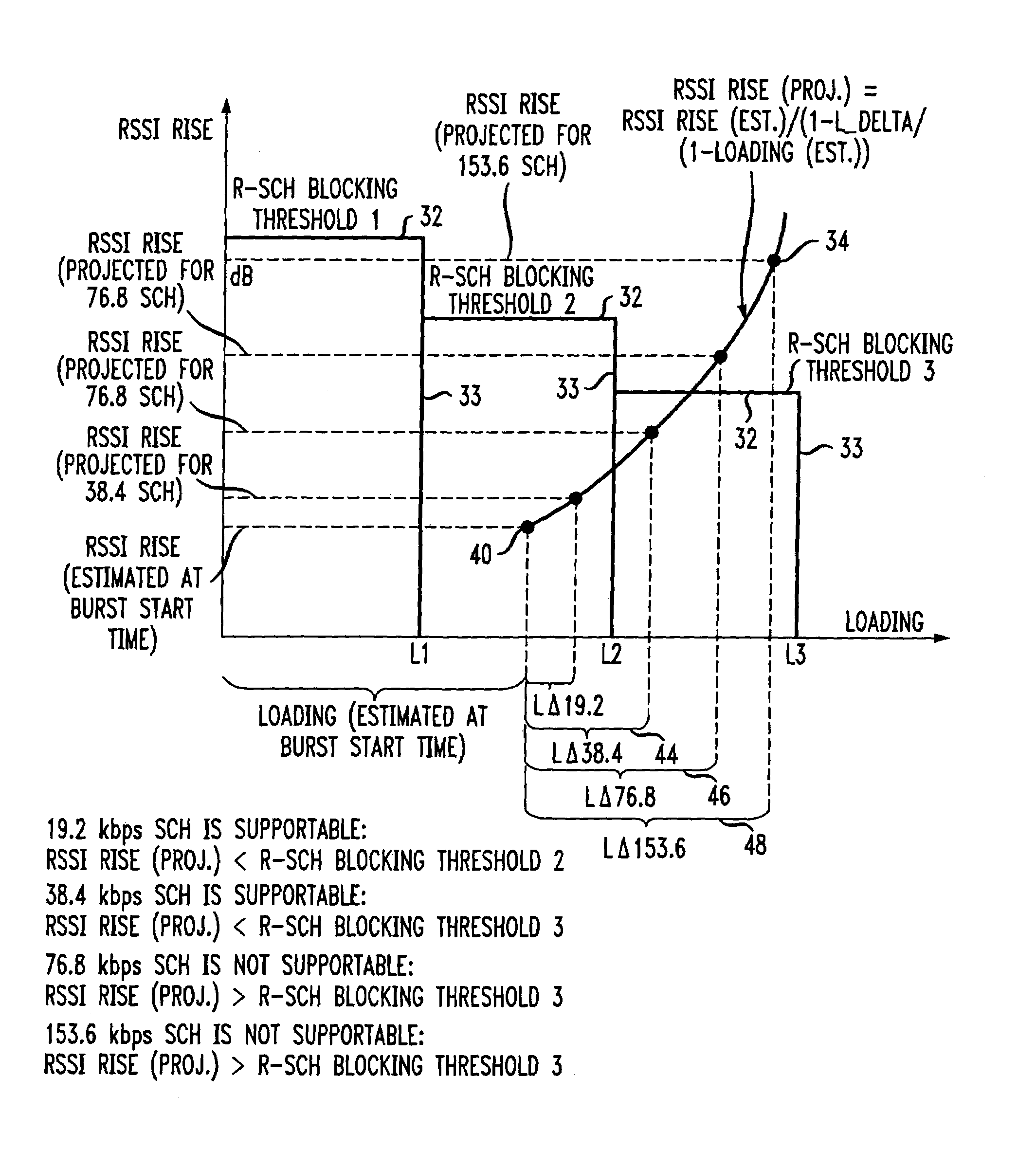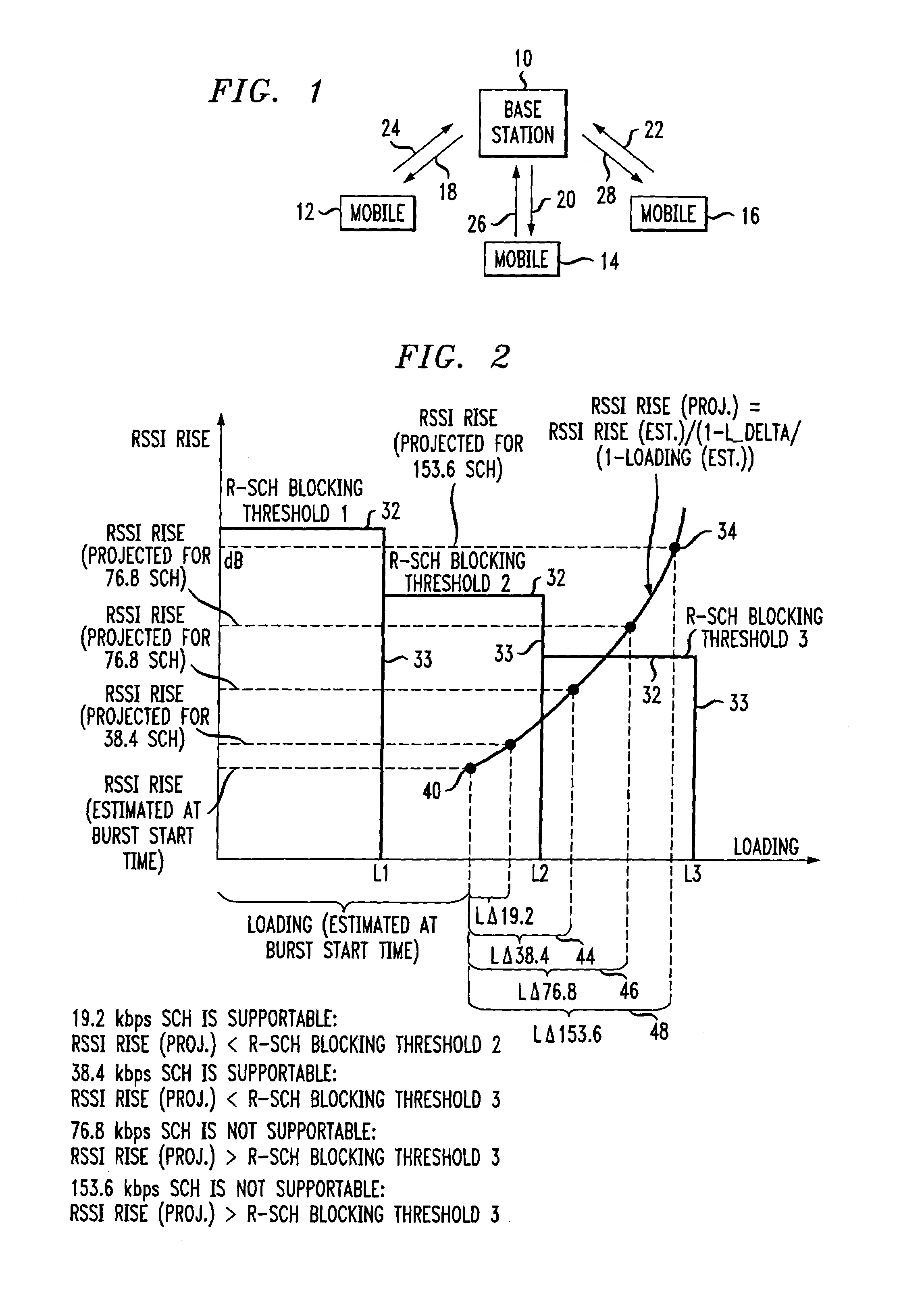Method of determining transmission rate from a mobile station to a base station in a wireless communication system
a wireless communication system and mobile station technology, applied in the field of mobile telephone systems, can solve the problems of interference with the signals transmitted by all other mobile stations, and achieve the effect of facilitating the maintenance of a performance target (quality of service level) and not degrading the performance of the wireless communication system
- Summary
- Abstract
- Description
- Claims
- Application Information
AI Technical Summary
Benefits of technology
Problems solved by technology
Method used
Image
Examples
Embodiment Construction
[0011]The invention disclosed in pending U.S. patent application Ser. No. 09 / 413,036, filed Oct. 6, 1999, entitled “Method and Apparatus For Controlling Reverse Link Interference Rise And Power Control Instability In A Wireless System,” by Gandhi et al, discloses a method for avoiding system instability and / or overload by determining whether or not a new call should be given access to a system. In the aforementioned patent application, the cell site simultaneously estimates and maintains several parameters needed for the overload control decision. These parameters include relative interference rise over the thermal noise floor RSSI rise, loading, reverse frame error rate (RFER), and dropped call rate. Depending on implementation complexity, different subsets of these parameters are used for the control decision. The RSSI rise is measured directly at the cell site and processed appropriately via sampling and statistical averaging to reduce the impact of instantaneous variations in th...
PUM
 Login to View More
Login to View More Abstract
Description
Claims
Application Information
 Login to View More
Login to View More - R&D
- Intellectual Property
- Life Sciences
- Materials
- Tech Scout
- Unparalleled Data Quality
- Higher Quality Content
- 60% Fewer Hallucinations
Browse by: Latest US Patents, China's latest patents, Technical Efficacy Thesaurus, Application Domain, Technology Topic, Popular Technical Reports.
© 2025 PatSnap. All rights reserved.Legal|Privacy policy|Modern Slavery Act Transparency Statement|Sitemap|About US| Contact US: help@patsnap.com



